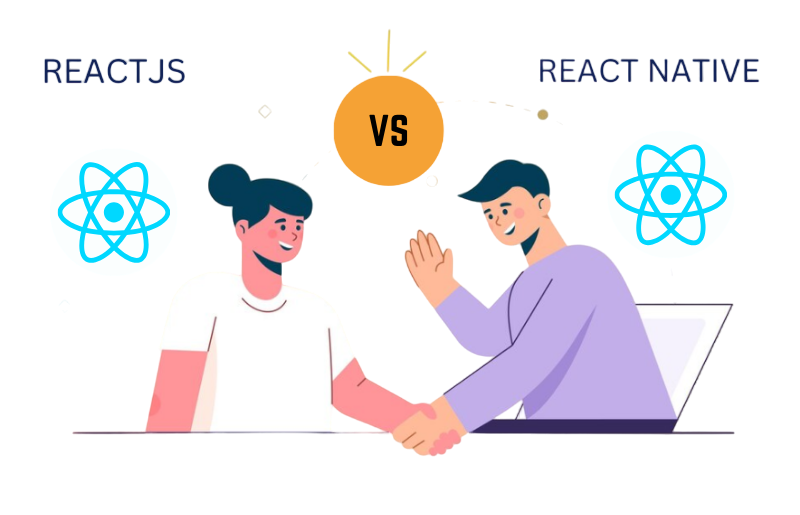In the fast-changing world of web and mobile app development, picking the right technology is crucial for your project’s success. ReactJS and React Native, both created by Facebook, are popular choices for building user interfaces. While they share similarities, they are designed for different purposes and fit different types of projects. Let’s break down the differences between ReactJS and React Native to help you decide which one is the right choice for your needs.
What is ReactJS?
ReactJS is a JavaScript library used for building interactive user interfaces for web applications. It lets developers create reusable UI components, which makes the development process easier and more efficient. ReactJS uses a component-based architecture, where each part of the UI is a separate component that can manage its own state. This makes it easier to build and maintain complex UIs.
Key Features of ReactJS:
- Virtual DOM: ReactJS uses a virtual DOM to quickly update and render components, improving performance.
- Component-Based Architecture: Encourages reusability and makes the code more modular.
- Unidirectional Data Flow: Ensures a predictable data flow, which simplifies debugging.
- JSX Syntax: Allows developers to write HTML-like code inside JavaScript, making the code easier to read.
When to Choose ReactJS:
- Web Applications: ReactJS is ideal for building web applications, as it is optimized for the web.
- SEO-Friendly Projects: ReactJS can be combined with tools like Next.js to create SEO-friendly websites.
- Complex UIs: If you need to build complex and dynamic UIs with reusable components.
What is React Native?
React Native is a framework for building native mobile apps using JavaScript and React. It allows developers to write code once and deploy it on both iOS and Android platforms. React Native uses native components that match the platform’s UI elements, providing a truly native look and feel. This combines the benefits of native development with the efficiency of a single codebase.
Key Features of React Native:
- Cross-Platform Compatibility: Write code once and run it on both iOS and Android.
- Native Components: Uses native UI elements for a smooth user experience.
- Hot Reloading: Allows developers to see changes instantly without needing to recompile the entire app.
- Rich Ecosystem: Access to many libraries and plugins to add more features.
When to Choose React Native:
- Mobile Applications: React Native is perfect for building mobile apps for both iOS and Android from a single codebase.
- Fast Development: If you need to launch a mobile app quickly, React Native’s features like hot reloading can speed up the process.
- Native Performance: When you need a native look and feel with strong performance on mobile devices.
Key Differences Between ReactJS and React Native
1 Platform Focus:
-
- ReactJS: Best for building web applications.
- React Native: Best for creating native mobile apps.
2 UI Components:
-
- ReactJS: Uses standard HTML tags and web components.
- React Native: Uses native mobile components like <View>, <Text>, and <Image>.
3 Performance:
-
- ReactJS: Optimized for web performance with the virtual DOM.
- React Native: Offers near-native performance by using native components.
4 Development Environment:
-
- ReactJS: Requires a web browser for development and testing.
- React Native: Requires a mobile emulator or physical device for testing.
5 Code Reusability:
-
- ReactJS: Code can be reused within the web domain.
- React Native: Code can be reused across both iOS and Android platforms.
Conclusion
Both ReactJS and React Native are powerful tools for developing user interfaces, but they serve different purposes. ReactJS is ideal for web applications with a component-based architecture and efficient rendering. React Native, on the other hand, is designed for mobile app development, offering cross-platform compatibility and native performance. Your choice between ReactJS and React Native should depend on your project’s specific needs, such as the target platform, performance requirements, and development timeline.
E Edge Technology PVT LTD can help you decide and implement the right solution for your project.













 Database Development
Database Development












































